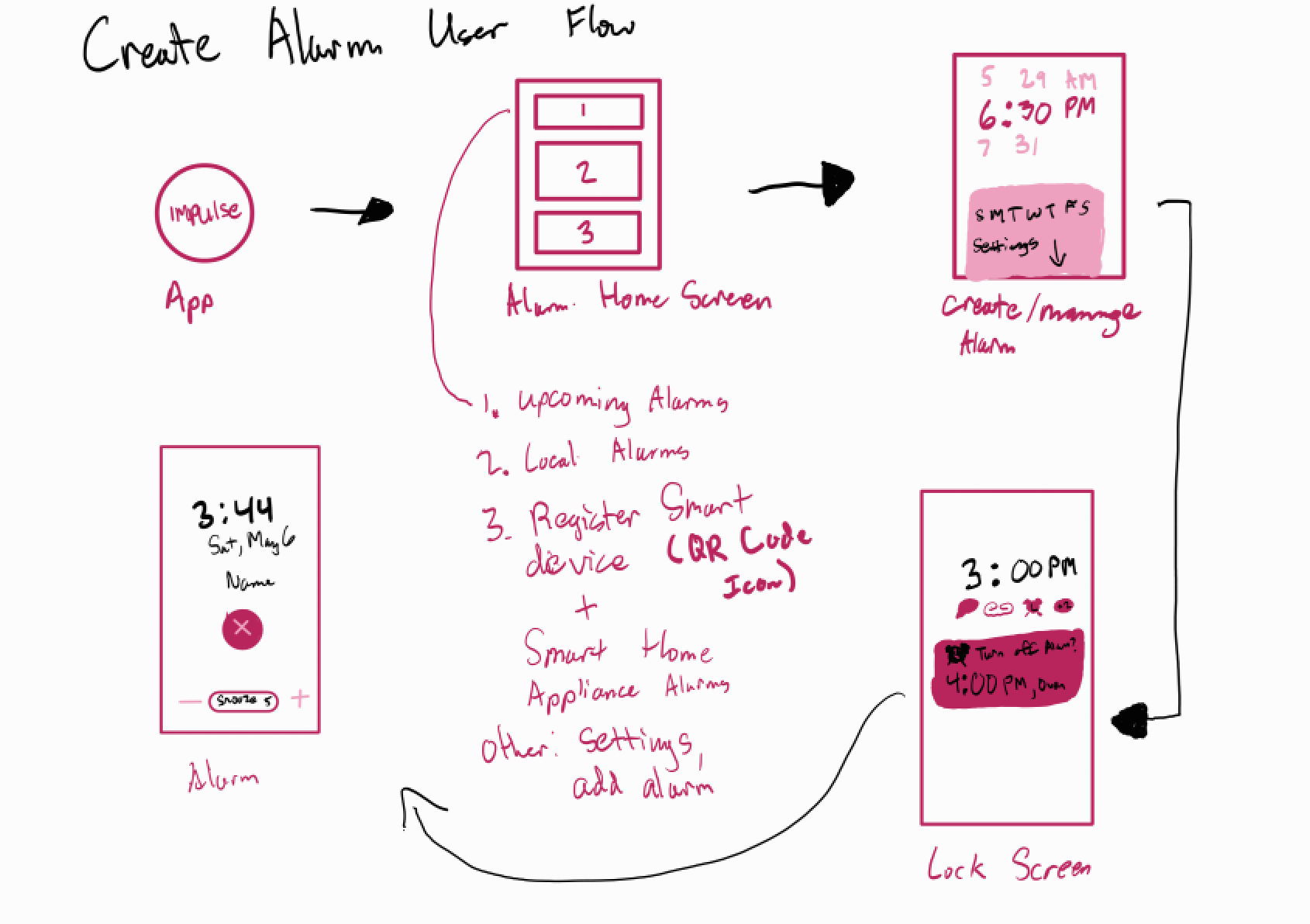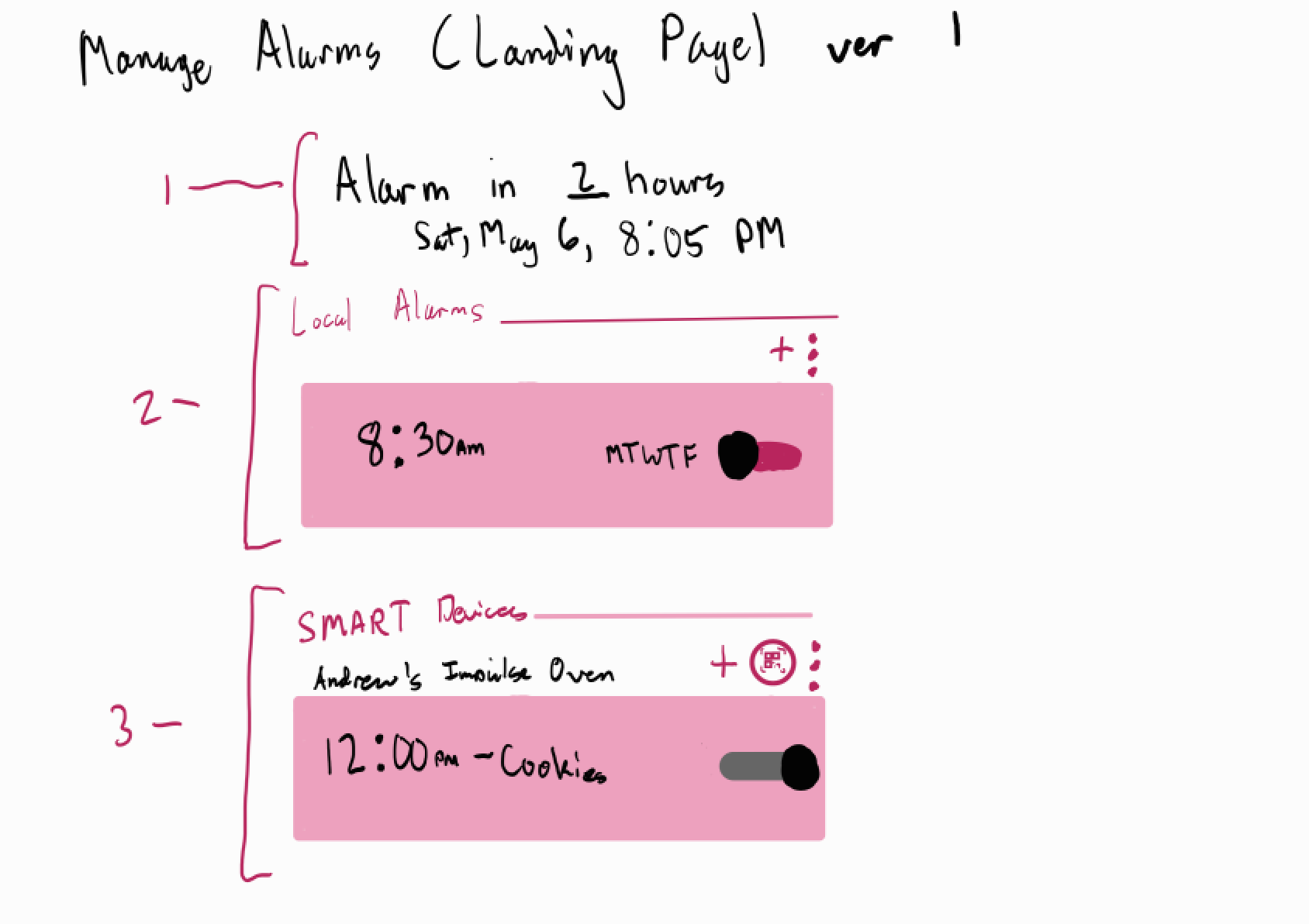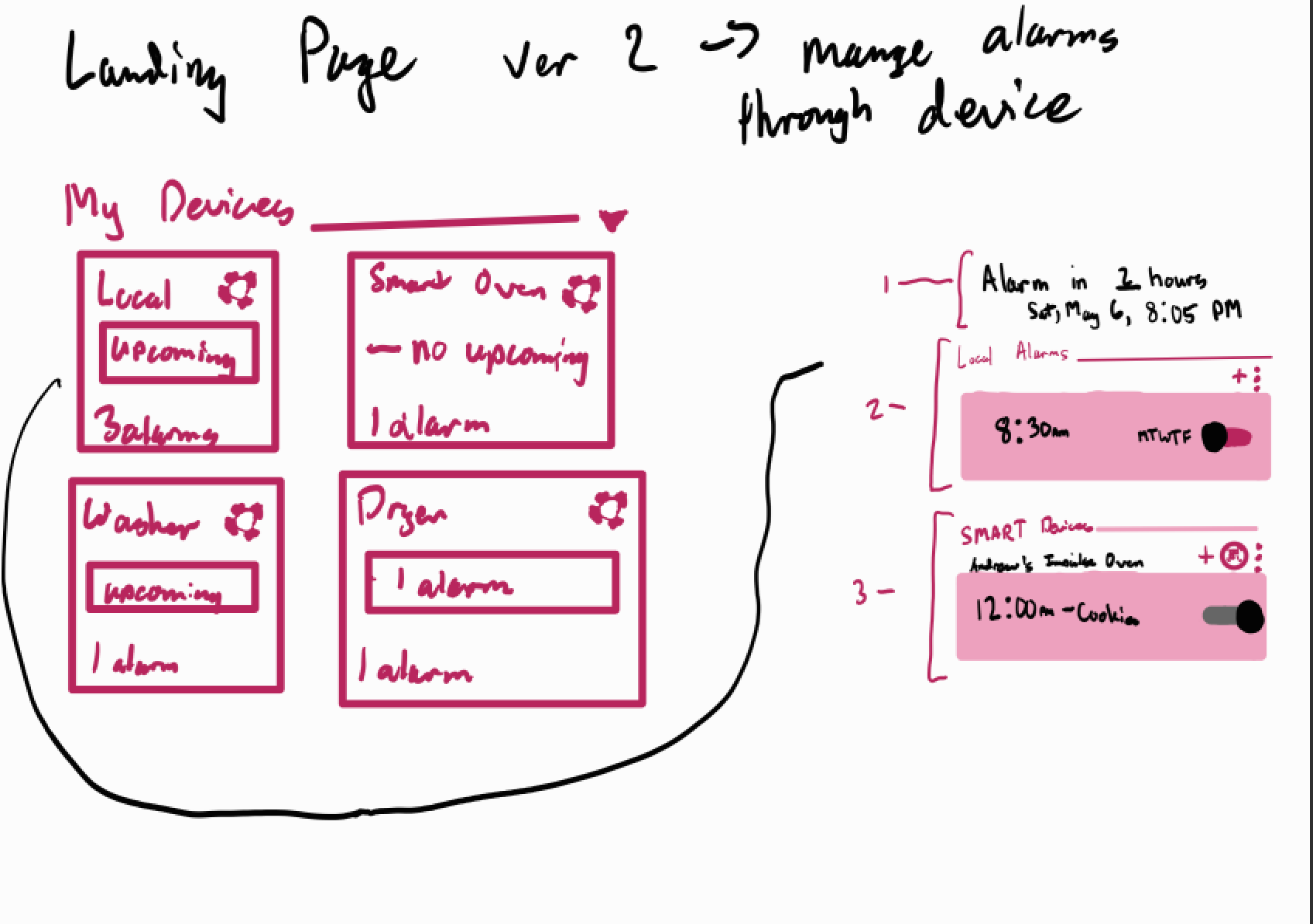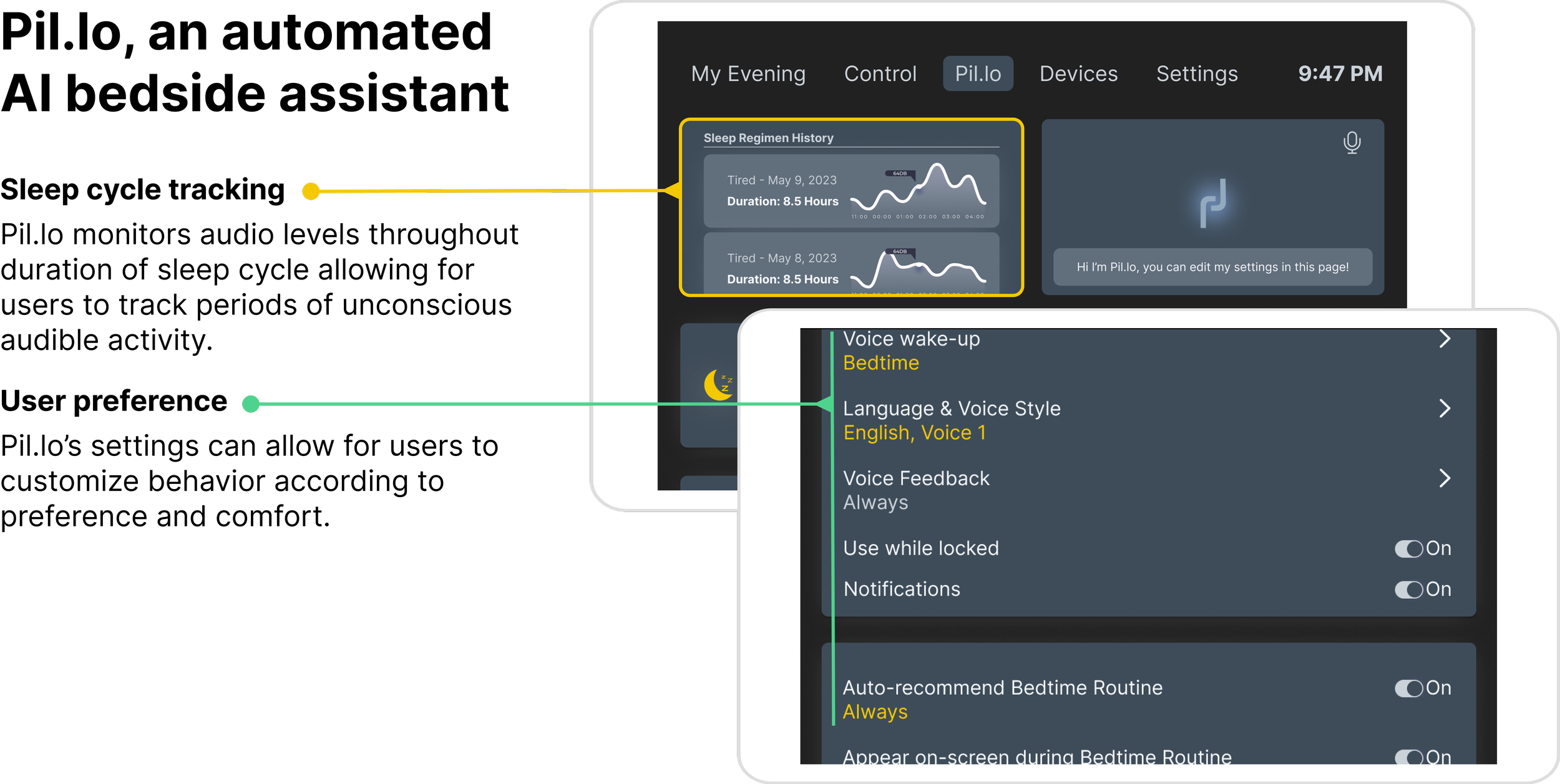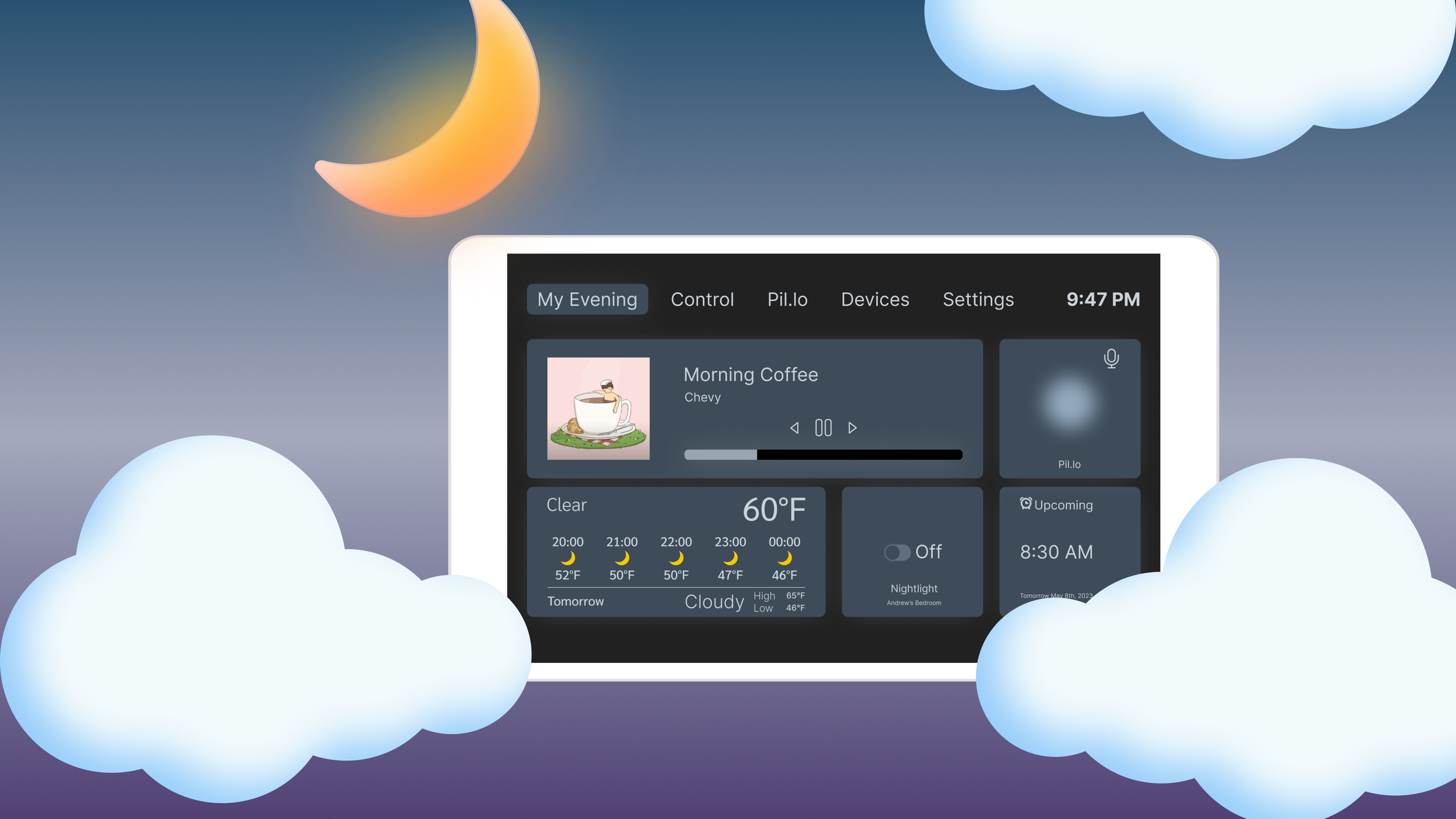
Pil.lo SMART Alarm Assistant
Prototype available here
The Challenge
Introduction:
This project was part of a product design interview I did for a job. I wanted to share my approach to this 1-week design challenge. I wanted to create a functionally and aesthetically pleasing product time-efficiently to prove my skill set.
Design a SMART Alarm Clock with These Functions:
Setting the time
Setting an alarm
Controlling screen brightness
Managing alarm types (sunrise alarm vs. alarm sounds)
Setting alarm audio (sound, music, etc.)
Providing snooze and off options
While Considering:
Hardware design (buttons, display, touch screen)
Software interface design that promotes good sleep hygiene
Accessibility
New user friendly
Visual engagement
The Solution
What is it?
Pil.lo is an AI Assistant committed to providing a better sleep environment utilizing SMART home devices based on their level of fatigue.
Key Measurable Metrics:
Improved user perception of sleep quality
Reduced amount of time experiencing tiredness throughout the day
Assumptions:
Users own multiple SMART Devices that affect lighting, temperature, humidity, and quality of life
Users don’t have a strict sleep schedule that affects their day’s performance
The Process
Ideation
Prior to conducting user research, I found it important for our users to maintain convenient SMART device control through their phones. Here, I assumed that users would manage their sleep schedules and alarms using the device that they were more presently around.
Features Considered:
QR Code device registration & merging existing account information
Controlling timer & alarm activity for multiple devices through one device hub
Customization of alarm sounds and interactions (vibration & audio from streaming platforms)
Adjusting screen brightness
After these features were identified to address the prompt, I sketched out some initial ideas of what these would look like along with creating a sitemap.
Preliminary Sketches
Sitemap
Information Architecture
Research & Synthesis
These solutions were tailored to address user needs, goals, pain points, and desired outcomes derived from user interviews (6) conducted:
Multiple Device Management:
Customizable control panels depend on devices owned and synced with SMART home environment
Need for management of multiple wireless connections
Different widgets manageable on same screen
Should have the capability of voice-activated assistant to control device settings free from direct use or contact
Physical Restrictions
User voice activation responses to microphone
Text-to-speech capabilities
Touch-screen design supports different holding positions and portability
Location of device is concurrent with ability to track sleep hygiene
Reduce Cognitive Load Through Saved Preferences
Different preferences for device settings stored in saved lists that are swappable upon commands
Saved phrases directly answer user needs for responses
Depending on home conditions (day or night), UI color changes while maintaining system preferences for users
Flexibility Across Different Intended Uses
Includes future goal of incorporating sentiment analysis to gauge a user’s emotional state
Integration with online streaming platforms such as Spotify and YouTube promotes comfort for the user
Missed alarms and notifications should be reviewable and sent to the linked device acting as the adjacent controller
Feature Highlights
Key Design Decisions
Based on the functionality desired and understood from the prompt along with what I uncovered from the research conducted, I made the following design decisions to focus on:
Touch Screen Tablet Display
Display size maintains portability while being able to multitask which beats out phones and larger displays
Multi-touch display permits a user to interact with various subject matters quickly
Natively provides a powerful audio recording
Microphone & Motion Sensor
Reduces false positive detection of user activity
Promotes cohesive and faster perceived emotional response by users from AI
Works well with speech recognition software or in situations where sound is converted to text
Cheap and affordable
Freedom while speaking and does not require cables
If This, then That Feature (IFTTT)
Customizable settings according to preference
Location control flexibility
Promotes work-life balance by reducing activities
Conclusion & Next Steps
Pil.lo and this interface was meant to address making a SMART alarm for Impulse Labs’ design challenge while promoting good sleep hygiene. Overall, my design rationale is that SMART devices should be reducing the amount of necessary tasks that provide comfort to the user, not adding to them. Therefore, less tangible products are key to providing a good user experience.
Consider More than Just Software
Given the nature of the task I was presented with and the history of my past works, I initially thought of a software approach to designing this SMART Alarm Clock. The more I looked into the data I uncovered in my research, I found multiple opportunities where different applications of other technologies could contribute to an effective solution.
Less Hardware, More Automation
After looking at different SMART products that attempted to cater to user needs of emotional responses,
I’ve found that the expectations and requirements to utilize that technology efficiently added to their cognitive load and overall pain-points.
Reflections & Future Considerations
Given the time constraints of this challenge, I would want to explore more about tracking overall sleep cycle satisfaction despite not fully completing a regimen so that these responses provided by Pil.lo are more accurate. I enjoyed doing this design challenge as it forced me to think outside of my software comfort zone and consider design in other areas of tech.
Prototype available here







